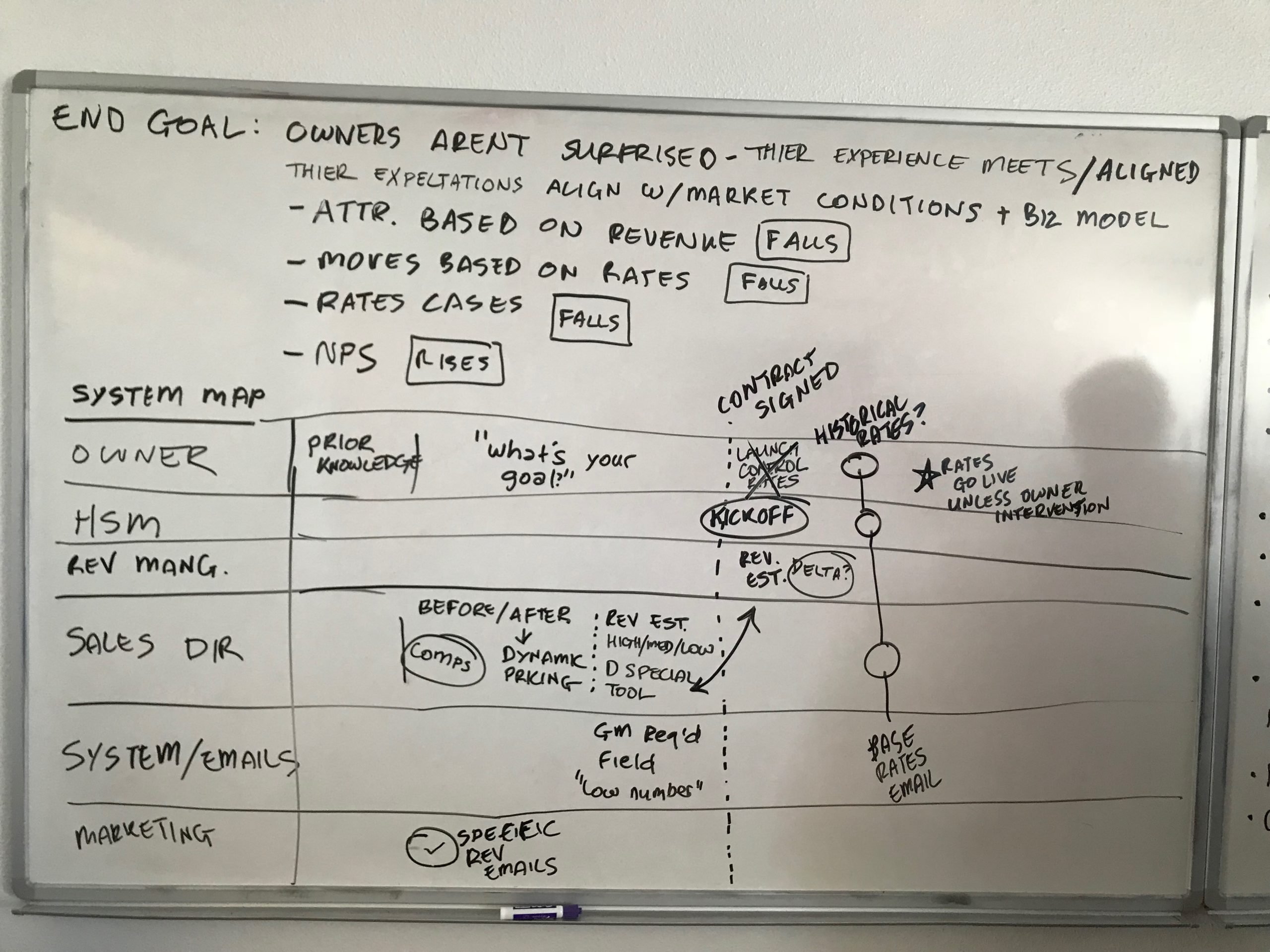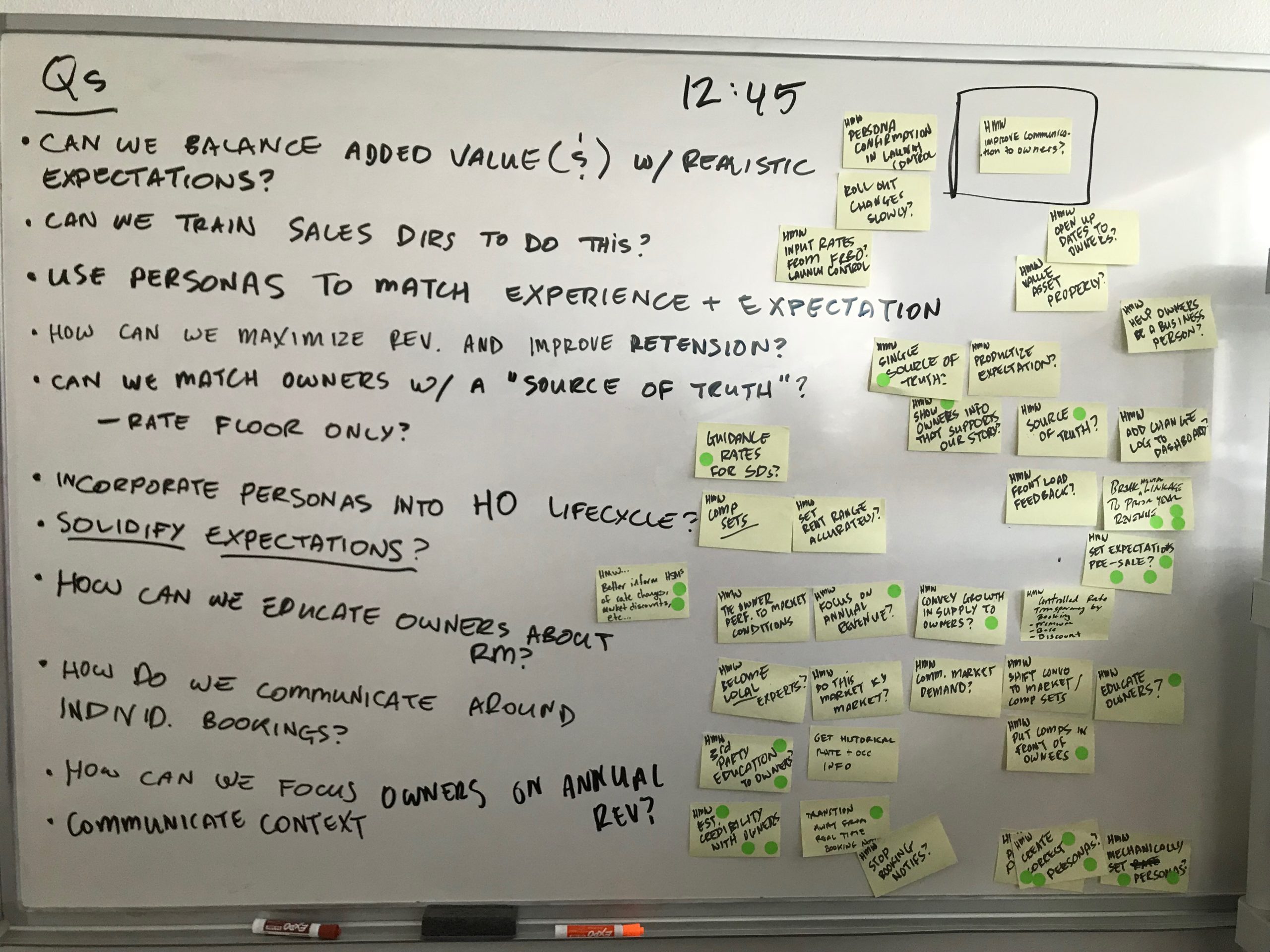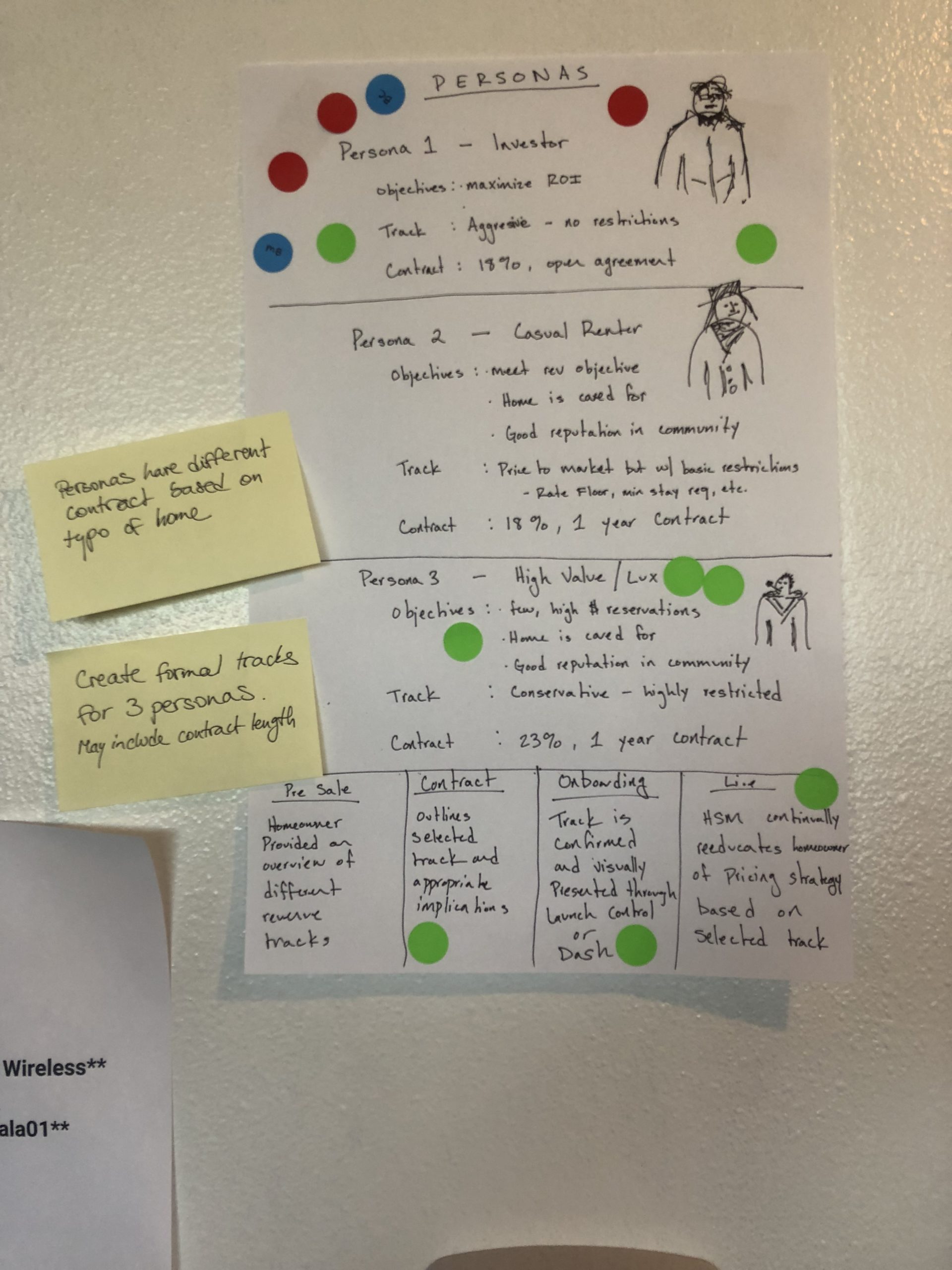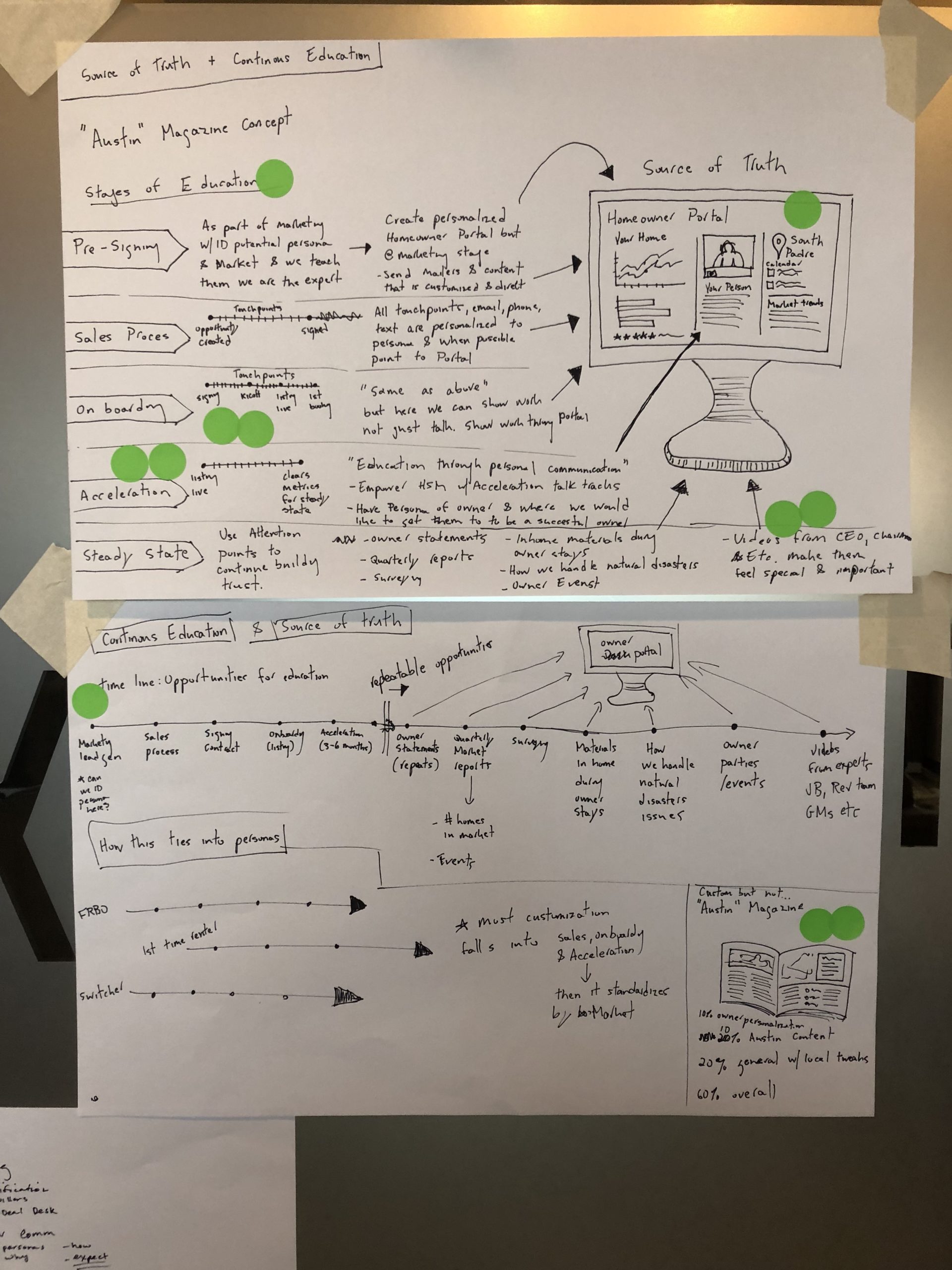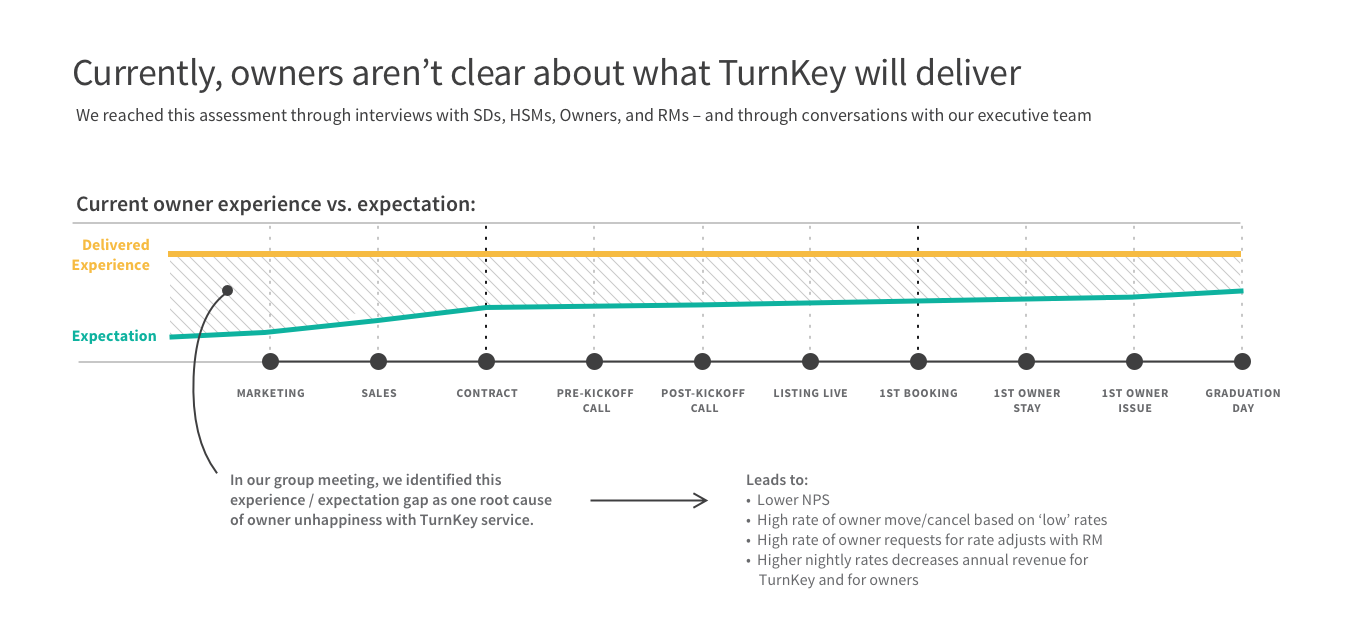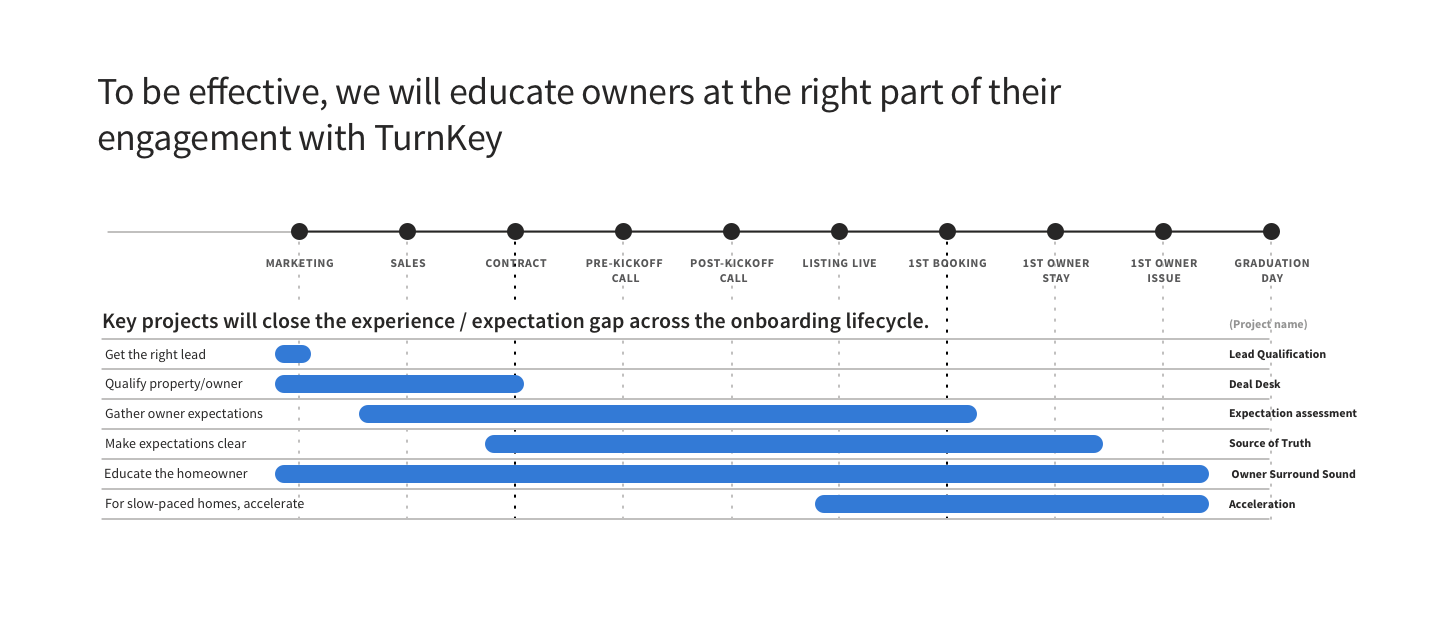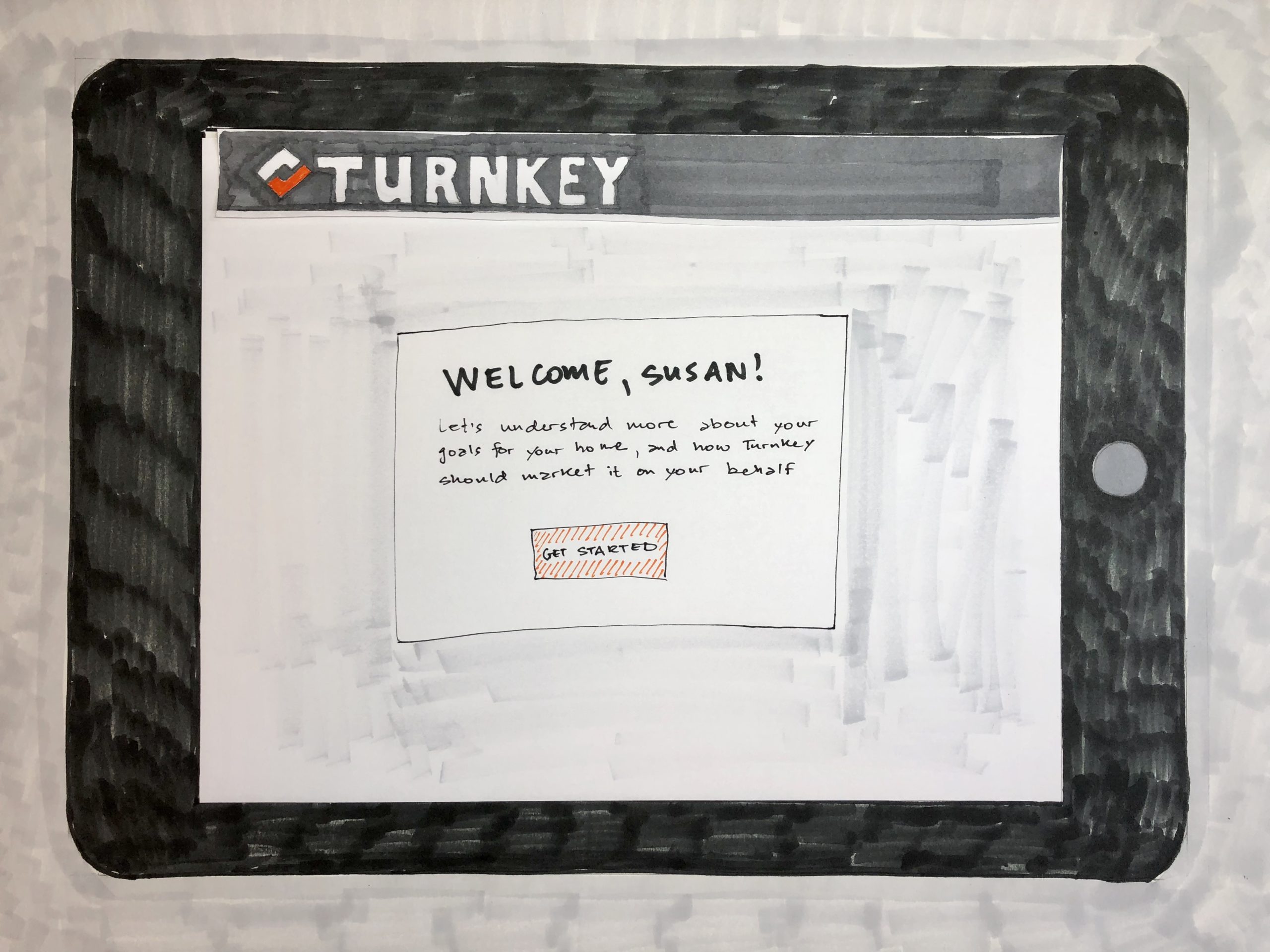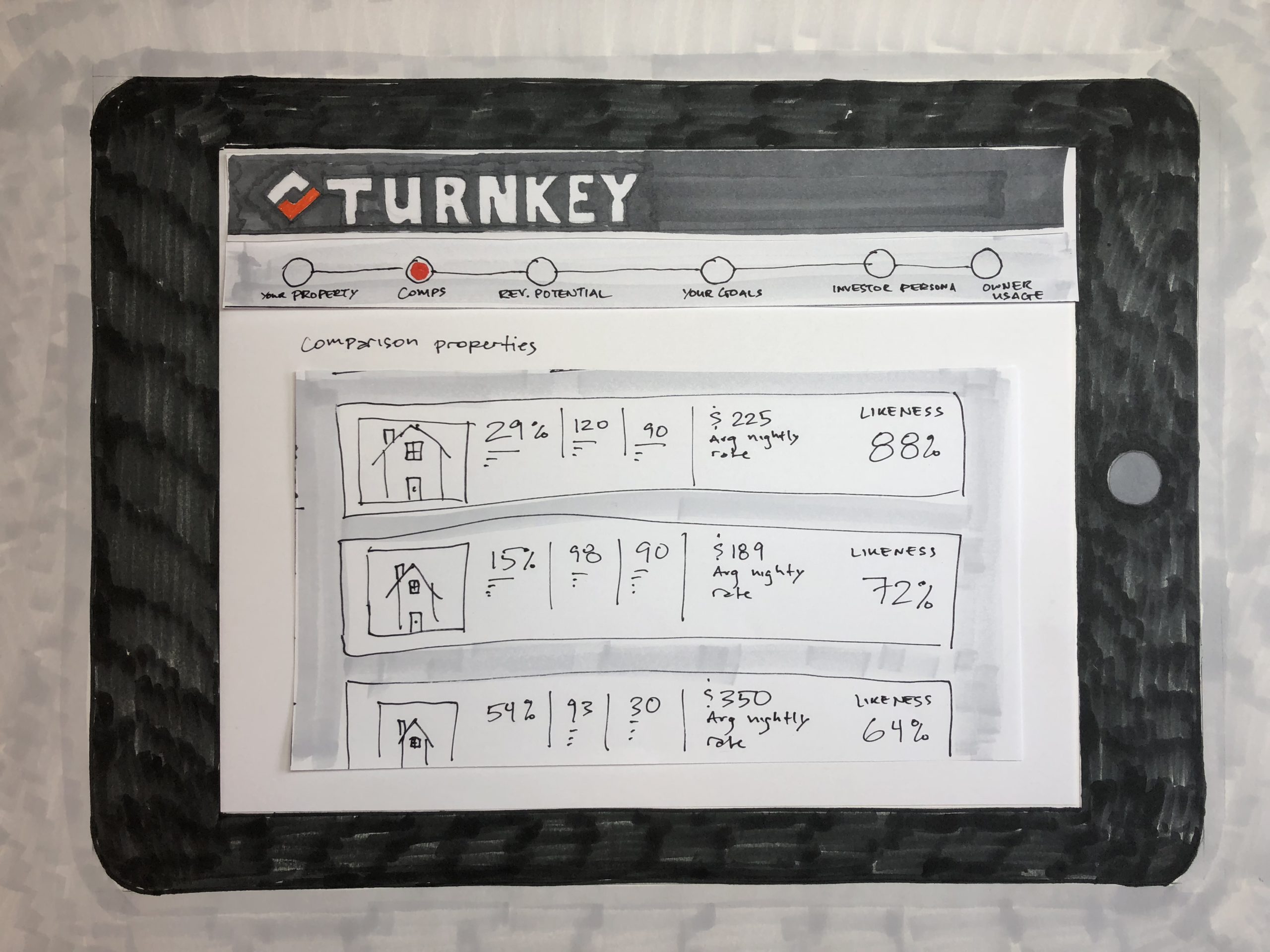Strategy and kickoff
Turnkey is a full-service vacation rental management company. By handling the booking process with guests, and managing the day-to-day cleaning and maintenance of the rental, - they truly own the end-to-end experience.
CompanyTurnkeyYear2018Duration1 weekRolePlanning, facilitation, record-keeping, paper prototypes
Annualized attrition was a huge drag on profitability. As it cost ~$5k to onboard a customer, this worrying trend needed to be addressed.
In order to be a profitable business, Turnkey needed to educate owners in order to truly maximize the income of the rental property. Currently, marketing, onboarding, account management and revenue management had no centralized strategy to accomplish the goal of vetting, onboarding and educating owners.
This started as internal research on an unrelated product.
Eventually, I created an interview plan that included interviews with 10 account managers, five customers and five stakeholders.
Given that this problem spanned the entire company we thought that a structured problem-solving exercise had the potential to generate new ideas and get everyone on the same page about a solution. Given busy schedules and a large team, we chose a one-day sprint process to see what kind of results we could get with a low overhead of time.
I compiled my findings and presented them to a group of TurnKey executives.
My research found that one of the largest drivers of customer dissatisfaction was a gap between the revenue expectations as set during the sales process, and the results that TurnKey was able to deliver managing the home.
I put together this diagram to help show the service blueprint of setting expectations.
The first part of the process presented an opportunity to improve the overall customer experience. This could have an impact on attrition. If we could align customer expectation with the results of actual service delivery, we would reduce the dissatisfaction from the perception of underperformance.
Sales and onboarding teams inadvertently set revenue expectations that a customer's behavior made it impossible to meet.
There were a few key reasons that I had discovered in my research. There was a lack of coordination between departments. Customers needed education to help them understand that if they stay in their rental during peak season, that the revenue expectations would drop precipitously. And we needed to clearly delineate customer personas and give them an appropriately-priced service based on their goals.
I proposed a single-day design sprint to frame the problem and collaborate on solutions
After discussion, I proposed a design sprint as single-day working session. This would get us the full attention of busy teams and executives. We needed a process like this because the problem spanned sales, onboarding, and revenue management.
We started the sprint by framing the problem in the form of a goal. We defined the movement of metrics as indicators of success.
The gap between owner experience and expectation became a point of alignment for the group. The implicit understanding was that the gap was creating low trust. We were asking owners to trust us with the delicate matter of pricing their vacation rental nightly rates – but we weren't earning their trust.
Next, we listed barriers to achieving our outcomes in the form of questions.
Changing barriers into questions keeps participants focused on positive, forward momentum towards solving problems.
Participants used the questions as prompts for working on a solution
This was the core of the design process. Having defined the problem, outlined goals, defined metrics and listed barriers, the group dove into solutioning.
Solutions fell into one of two categories: a focused solution on a particular moment; or a broad approach that considered a large span of the customer journey.
With no constraints on the solutions, participants flexed their knowledge of the business, the customer and the lifecycle of service. Whether a solution focused narrowly (as with one popular solution) or across the customer journey, there was range of excellent ideas for overcoming the barriers listed previously. A tight focus on the outcome and associated metrics helped participants tailor solutions to meet the scope of the problem.
A participatory consensus emerged
Many of these ideas already existed in previous projects and conversations in the company. The innovation of the design sprint wasn’t that new ideas were generated. What was new was that everyone in the room participated in a meritocratic and democratic process to choose a winner. This made it much more likely that disagreeing participants would still lend their support to the solution that had the most consensus support.
What I learned
It was exciting to solve organizational issues (IE need for alignment) with design tools. Many issues were happening across the customer lifecycle, and I hoped to use the sprint process again to solve larger issues that had previously resisted single-department solutions.
Next steps
As stewards of the requirements phase of this project, I wanted to make sure to organize the learning and consensus that had emerged around various projects. I created a document to share that could help to summarize the work of the group during the design sprint.
The following diagrams were shared with the team involved in the design spring. It was helpful to myself and a few others have a visualization of the problem, the projects that came out of the design spring, as well as customer personas.
Simply, we were overpromising and underdelivering. This was causing customers to leave our service.
Owners were being hit with surprises during their work with Turnkey. This lowered trust and hurt us when we made a big ask (like allowing Turnkey to set the nightly rate of a rental). Annual revenue predictions made early in the onboarding process were too often overpromises. Often the owner's behavior (IE staying in their home during peak season) compromised TurnKey's ability to deliver on an earlier promise.
I paired projects with the part of the customer lifecycle that they would impact
Since much of the work to be done focused on the sales and onboarding process, it made sense to show how smaller projects could impact various parts of the customer lifecycle.
Customer personas impact expectations, education and ultimately the kind of service that we would direct them to.
During the spring, many participants listed customer personas as an important piece of workable solutions. I tried to capture that knowledge the best I could in a visualization.
As a final visual output, I created a low-fidelity mockup based on a highly-voted solution
Working with some of the sprint participants, I put together some paper mockups to help illustrate ways in which education and expectations alignment could be digitized. Customer education was key to much of the proposed solutions - so I wanted to think about how we could use visualizations to augment the spectrum of information that our customers received as part of the onboarding process.
Working on paper is another way to generate creativity and encourage greater participation. Since this was the scoping stage, an informal prototype seems liked the right level of fidelity to communicate that nothing was set in stone.
Executive participation was key
As a facilitator for the requirements phase of this project, I was excited to see the alignment created between various departments at Turnkey. Having members of the C-suite in the room was critical for indicating the seriousness of the problem. It also helped garner their support for the ideas being generated - especially since those ideas spanned departments and work silos at TurnKey.



